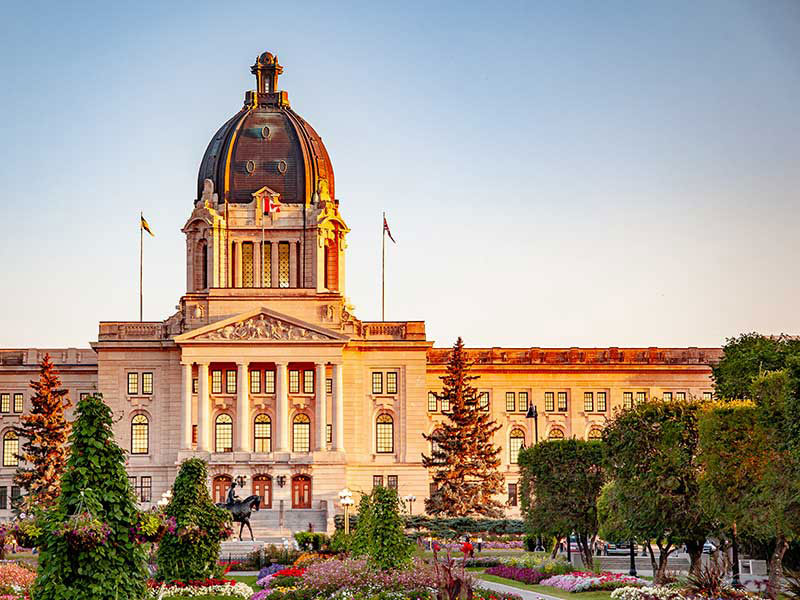
The Saskatchewan government projected a massive surplus in its budget Wednesday, with no new taxes and millions in new spending.
The budget forecasts a $1-billion surplus, fuelled by higher non-renewable resource and taxation revenue, which Finance Minister Donna Harpauer said reflects “balanced management.”
Harpauer said the government is to use much of the surplus to pay down debt, while millions of new dollars are to go into the health-care system.
“When we can, I think it’s very important to break down debt,” she told reporters. “It goes to good balance.”
The 2023-24 budget projects revenues of $19.7 billion, a nearly 15% increase from last year’s budget, with most coming from taxation and non-renewable resources.
The government expects to spend $18.7 billion this fiscal year, with $7.1 billion earmarked for health care and $4 billion for child care, as well as primary and post-secondary education programs.
Operating debt is expected to fall to $7.5 billion. Gross debt, which includes the debt of Crown corporations, is pegged at $30.9 billion.
Critics said the budget fails to adequately address cost-of-living concerns and health-care strains.
The Opposition NDP said the Saskatchewan Party government missed the mark on its spending priorities and that now is the time to provide affordability relief and offer more targeted funding in health care.
“The finance minister got religion on (debt) this year, at a time when our health-care system is crumbling and our schools are in desperate need of an investment,” NDP Leader Carla Beck said
“This is a budget about choices and a budget that shows just how out of touch this government is.”
Harpauer said she had to strike a balance between debt repayment and health-care spending.
“If you put it into health care, and then you say, `just kidding’ the following year because the revenue isn’t there, what have you really gained?” Harpauer said. “It depends what the surplus is from.”
Health-care spending marks a record for the government, with $431 million more forecast to be spent this fiscal year compared to last year’s budget.
The government plans to provide the Saskatchewan Health Authority an additional $191.4 million, with money going to hire and retain staff, including physician assistants.
Like the rest of the country, Saskatchewan’s health-care system has been short-staffed and under immense strain, which has caused long wait times and delayed surgeries.
The province plans to provide an additional $42.5 million to reduce surgical wait times. The government has also earmarked $518 million for mental health and addictions.
Beck said the health funding fails to “rise to the challenge” in addressing strains in the system and offers no harm-reduction measures.
She said her party would work to reform the health system, axe provincial sales tax charges applied last year to concerts and sporting events, and cancel utility rate hikes.
Harpauer said the government is not imposing new taxes because Saskatchewan is among the most affordable provinces.
She has introduced what she calls “targeted” measures for those considered low income, including seniors and people with disabilities.
Her budget includes an additional $26.6 million for programs to help low-income people pay for shelter and utilities.
However, Beck said the changes don’t cut it.
“We’ve seen the ranks of the homeless. We’ve seen the ranks of those using the food bank,” she said. “When we were looking at the cost of groceries, the cost of housing, the cost of utilities — it does not go very far for people.”
The budget also includes funds to address crime, including $7 million on the new Saskatchewan Marshals Service, which is meant to work with other policing agencies on locating and arresting people out on warrant.
The government plans to spend $3.2 million to expand the RCMP’s warrant enforcement team in Prince Albert and Crime Reduction Team in the North Battleford area.
There is to be $7.4 million to administer the province’s incoming firearms legislation, which includes a ballistics lab and a unit to oversee firearm licensing, storage and transportation.
The government is forecasting steady economic growth, with strong demand for resources, but stabilized commodity prices. Finance officials project the province’s economy grew by 4.8% in 2022.
The government has predicted smaller surplus budgets for the next three fiscal years.